Iris: planting and care, varieties, cultivation
 Iris (lat. Iris), or blueflag, is a genus of rhizome perennials in the family Iridaceae. Iris grows everywhere and has about 700 species of all kinds of shapes and shades. Iris is translated as “rainbow”. It was Hippocrates who named the flower in honor of Iris, the goddess of the rainbow. The legend says that when Prometheus gave fire to people, a rainbow flared up as nature was rejoicing. The rainbow was coming in colors all day, evening and night, and when the darkness receded and the sun rose, everyone saw amazing iris flowers blooming on the ground and the flowers looked like a rainbow.
Iris (lat. Iris), or blueflag, is a genus of rhizome perennials in the family Iridaceae. Iris grows everywhere and has about 700 species of all kinds of shapes and shades. Iris is translated as “rainbow”. It was Hippocrates who named the flower in honor of Iris, the goddess of the rainbow. The legend says that when Prometheus gave fire to people, a rainbow flared up as nature was rejoicing. The rainbow was coming in colors all day, evening and night, and when the darkness receded and the sun rose, everyone saw amazing iris flowers blooming on the ground and the flowers looked like a rainbow.
Meaning “blossoming”, Florence received its name from the Romans for the fact that the fields around the city were dotted with irises. The iris flower has been cultivated for more than two thousand years. And they are grown not only as a decoration of gardens, but also as a valuable raw material for the production of essences in the perfume industry.
Description of iris flowers
Irises are rhizome plants. The rhizome has cord- or string-like roots. Peduncles (one or more) are annual. The leaves are flat, ensiform, thin, two-rowed, sometimes linear, with a wax coating. They are collected in fan bundles at the base of the peduncle, there are no stem leaves. Flowers of irises are single, sometimes collected in small inflorescences, large, often fragrant, they are characterized by an intricate elegant shape and come in a variety of colors and combinations. The flower has six petals (in fact, they are the lobes of the perianth). The three outer lobes are slightly turned downwards, and they usually differ in color from the upper lobes that form a tube by merging at the base. Irises bloom from May to July, two or three flowers bloom simultaneously from one to five days. The fruit of iris is a capsule that opens up in three parts.
Species and varieties of irises
Bearded irises
Rhizomatous irises are classified into bearded and beardless by the shape of the flower. Bearded irises have hairy petals and their own classification (tall, medium, border, standard medium, small-flowered medium, intermediate medium, standard dwarf, miniature dwarf, table, arilbreds, arils and arilbreds, nonarilate arilbreds, arils and arilate arils). But this is the classification for scientists, for florist they are all just bearded irises of different sizes.
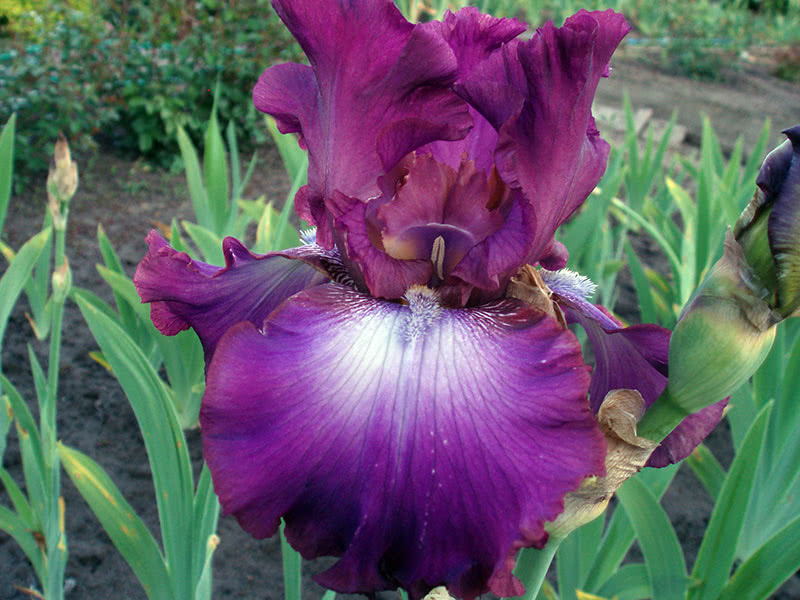
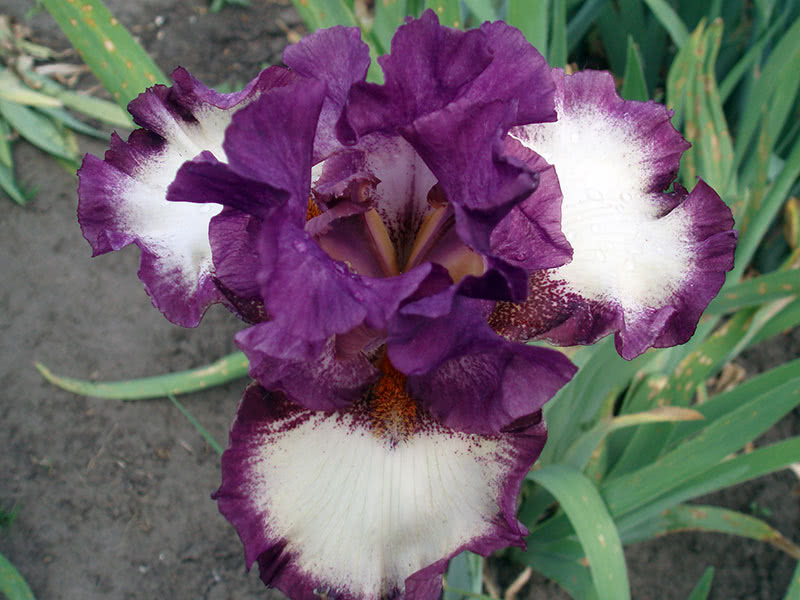
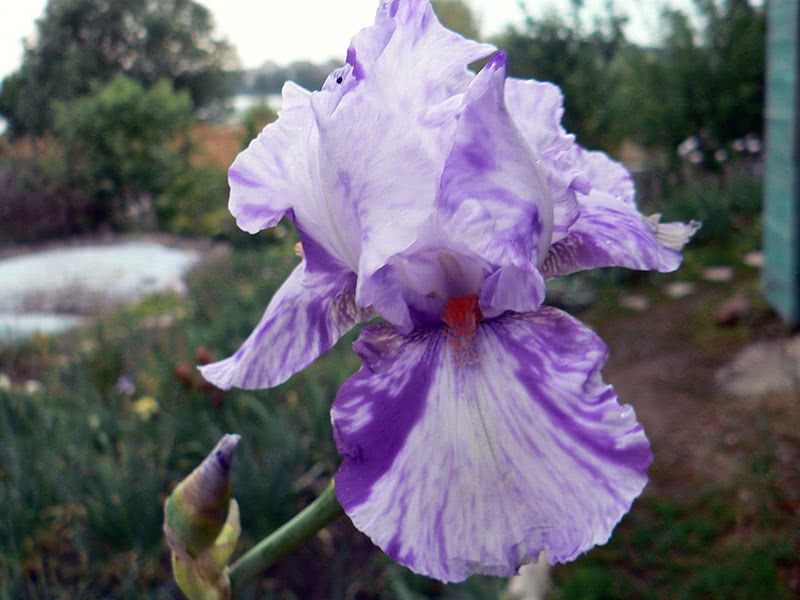
German irises
In cultivation there are hundreds of varieties of tall bearded iris that is called German iris. German iris is the most common species of bearded iris. Here are some popular varieties that will decorate any garden: Baltic Sea is a very wavy iris with flowers in color of light blues with blue beards; Bewilderbest is a wavy cream-burgundy-red iris with stripes and strokes of yellow and white; Acoma is a sky blue-ivory iris with a lavender border and it is very popular in the USA.

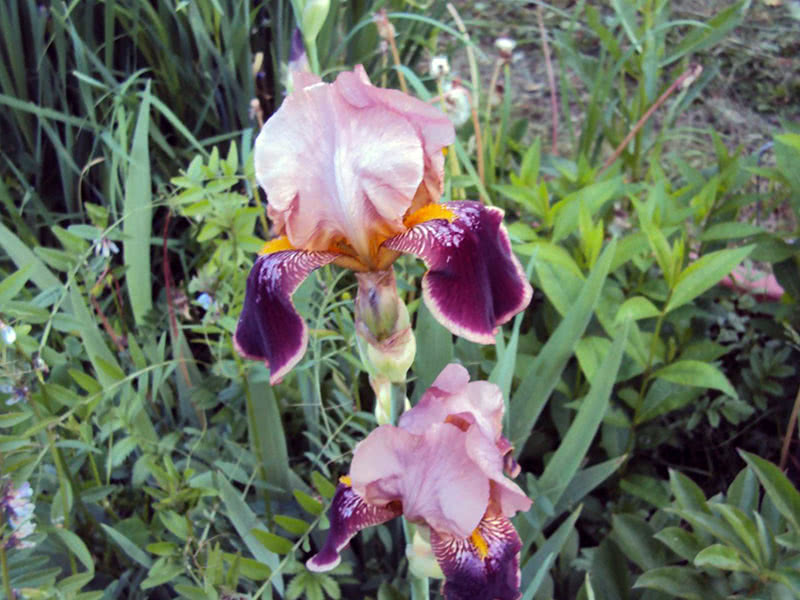
Beardless irises
It is a catch-all name and includes the following species: Siberian iris, Japanese iris, Spuria iris, Louisiana iris, California iris, yellow iris and other irises (specific and interspecific). We will tell you about the most popular species grown in cold and temperate climate zones.
Siberian irises
Its flower color varies from blue to dark purple, although today there are already about 1,000 varieties with different colors, for example, white irises Snow Queen; Imperial Opal has the height of 2.6 ft in the color of pink lavender, the flowers are up to 4 inches in diameter; Butter and Sugar is a yellow iris with a white border. There is only one shortcoming: Siberian iris is devoid of flavor;
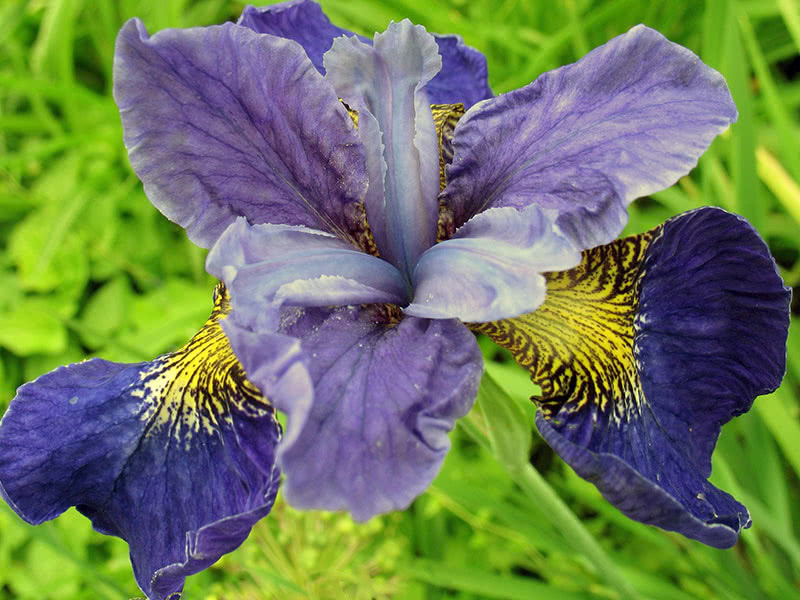
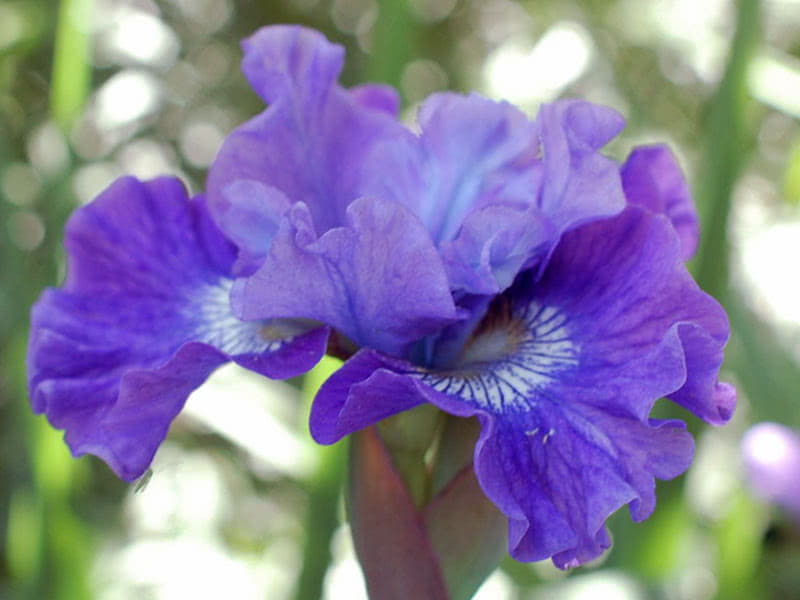
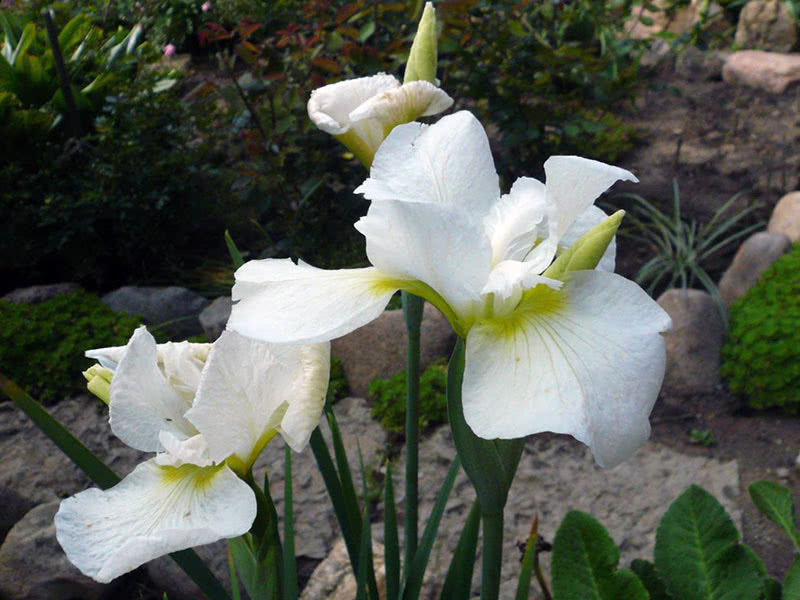
Japanese irises
It is iris ensata, iris japonica, iris kaempferi, with orchid-like large flowers up to 10 inches in diameter that do not have fragrance. Japanese breeders created polypetalous and double garden varieties of the Japanese iris that is called hanashōbu. Unfortunately, this species is not frost-hardy, therefore the flower growers recommend the varieties obtained for a temperate climate zone: Nessa-No-Mai is purple with white, the flowers are up to 9 inches in diameter; Solveig is a delicate light lilac iris; Vasily Alferov is simple iris of ink color;
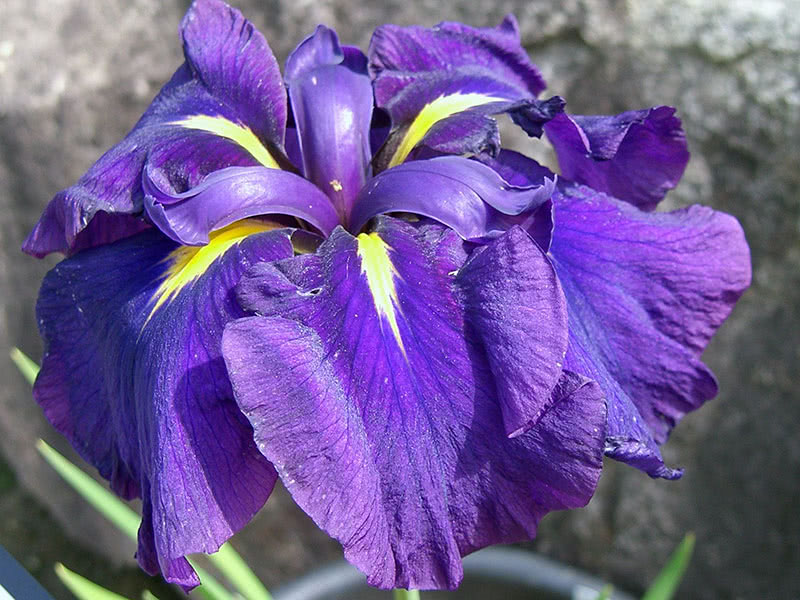
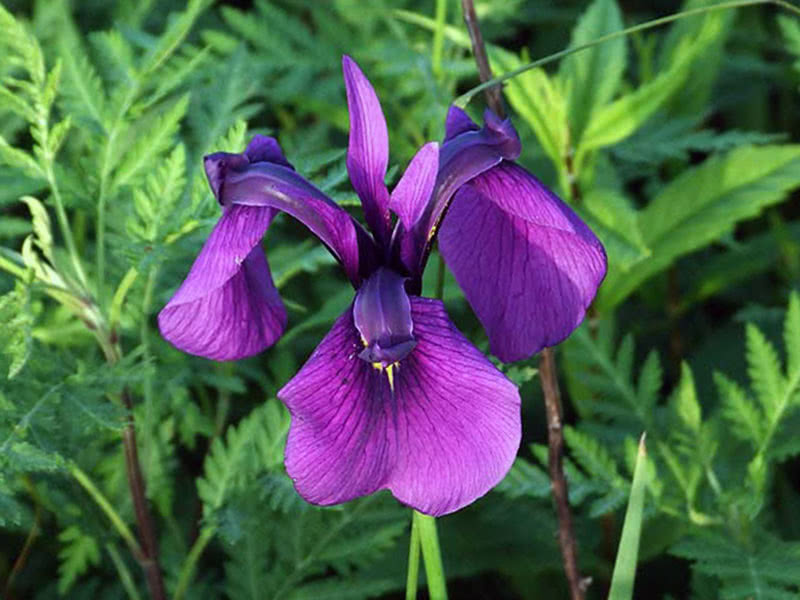
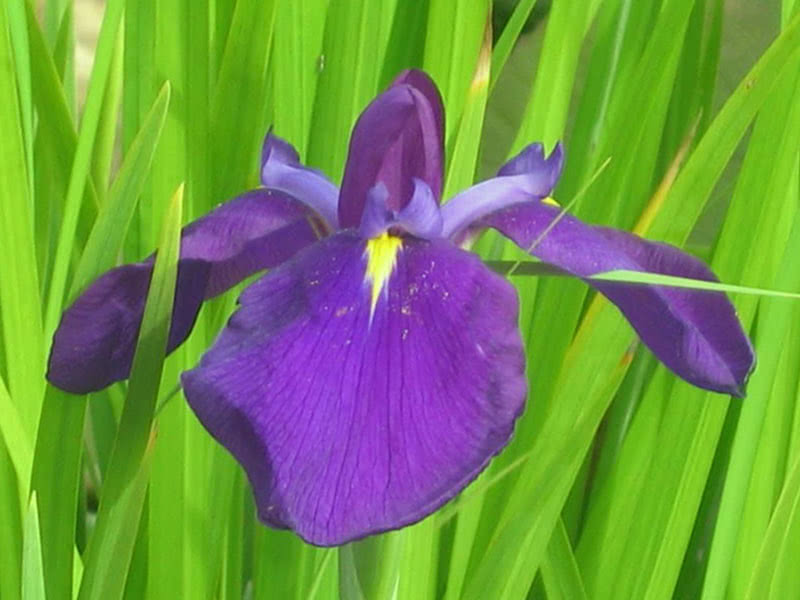
Spuria irises
It is very elegant, similar to bulbous iris xiphium, but much larger. In addition, spuria iris is frost-hardy and drought-resistant. Among the most beautiful there are: Lemon Touch is a lacy yellow-lemon flower with a darker golden shade, the height is 3.3 ft; Transfiguration is of the same height iris with from dark purple to blue-violet flowers with a bronze shade; Stella Irene is purple-black with a weak golden shade, the height is 2.9 ft.

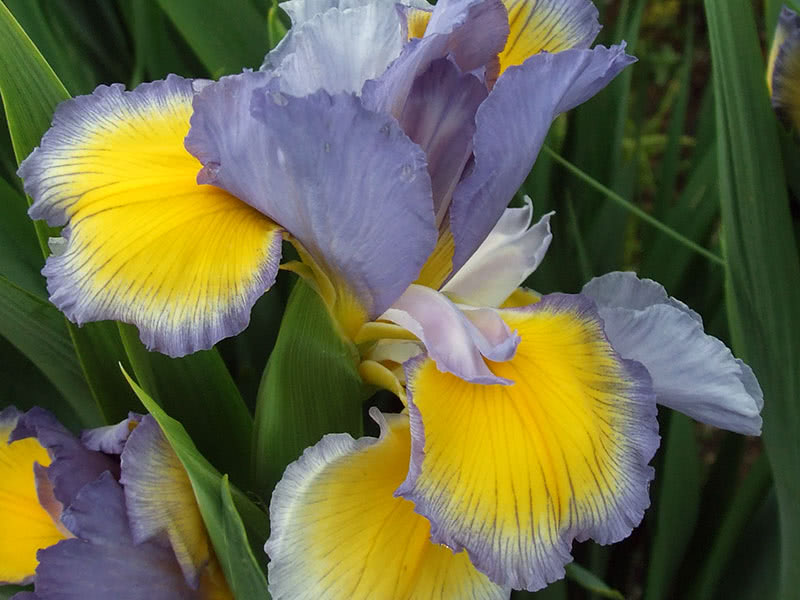
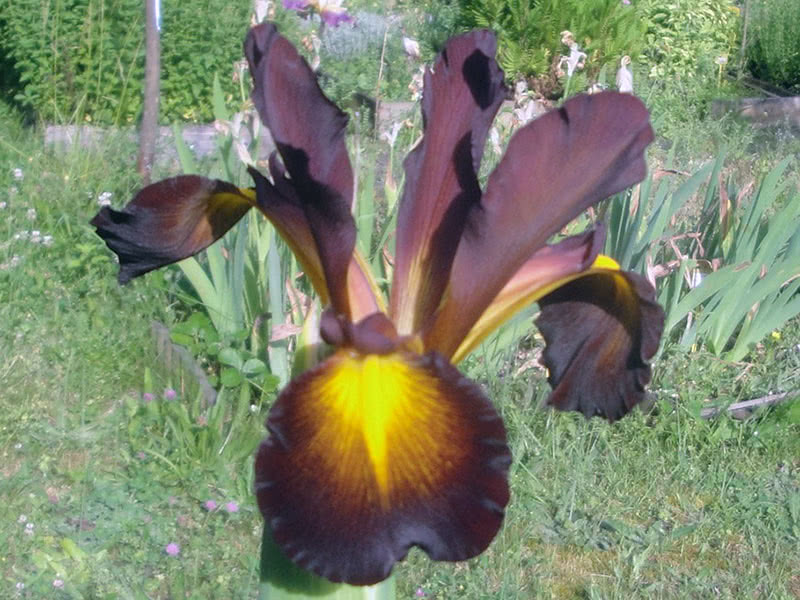
Yellow irises
It is also called water flag. This species differs from other species by growing only in moist soil. In nature it has flowers of yellow shades, in cultivation yellow iris is used for decoration of ponds. Popular varieties are Golden Queen with yellow flowers, Flore Pleno (double variety), Umkirch with pink flowers.
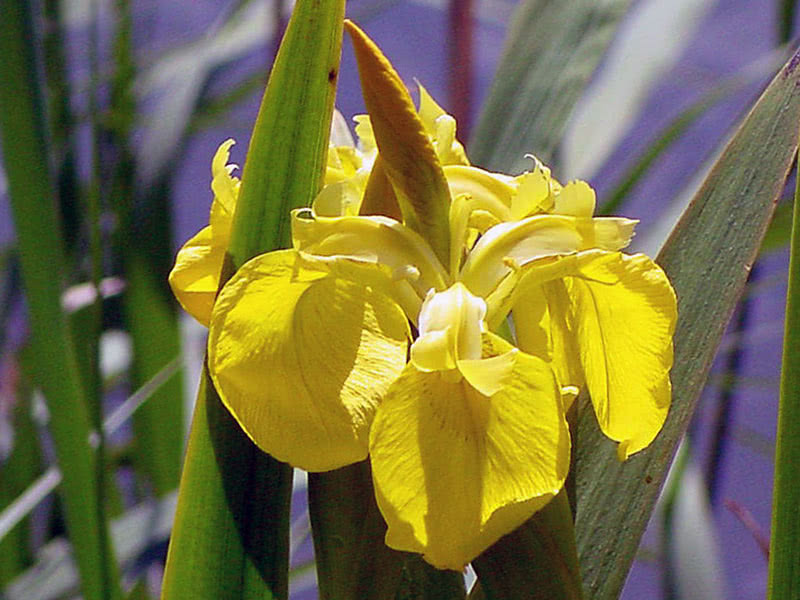
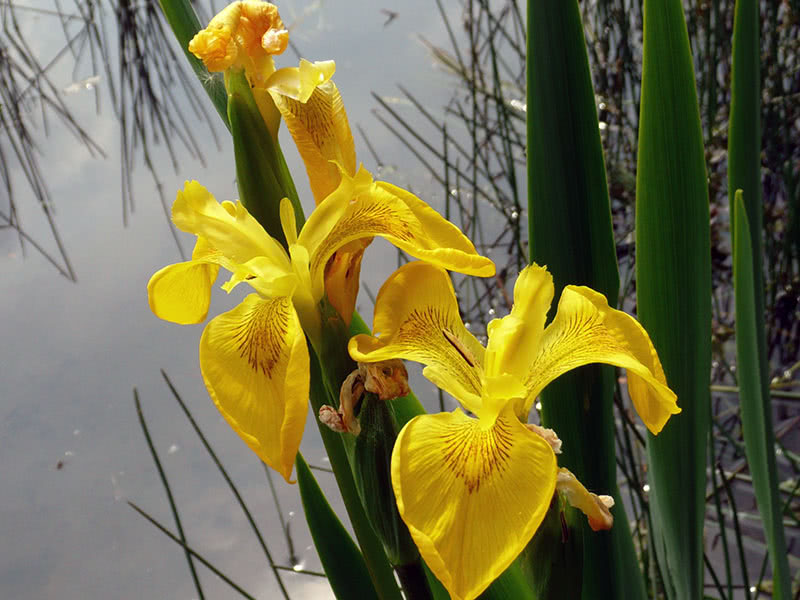
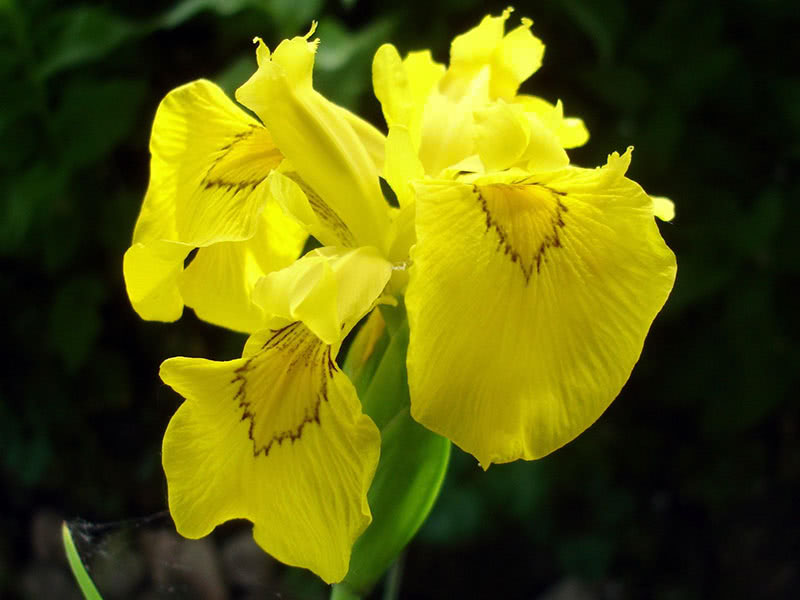
By color the iris varieties are divided into:
- monochrome (the same color of all parts of iris);
- two-tone (the lower and upper parts are of different shades of the same color);
- two-color (the lower parts are of one color, the upper ones are of the other);
- variegata ( the lower lobes are red-brown, the upper lobes are yellow);
- amena (the upper part is white);
- fringed (contrasting rim is either on the lower lobes or on all lobes);
- iridescent (smooth transition from one shade to another).
Features of growing irises
Many growers refuse to breed irises, believing that this is a very difficult process. In fact, growing of irises is by no means tedious and it is not as laborious as it seems. You just need to know some of tricks in care of these beautiful flowers.
Firstly, the peculiarity of irises is that their rhizomes grow horizontally and often become bare, going above the surface. Therefore, in winter irises must be necessarily sprinkled with soil and peat so that they will not get frostbitten. In spring, this cover should be carefully removed.
Secondly, irises like to move, and for one year they can change their location to the side by several inches. To make the rows look smoother, irises should be planted with a fan of leaves along, rather than across the row.
Thirdly, bearded iris should be planted in sand: sand is poured onto the bottom of the hole and the root of iris is spread over it. If deeply planted, iris will either die, or will not bloom at all.
Fourth, do not feed irises with organic fertilizers, they do not like them. Liquid mineral fertilizers are the best for irises.
Planting of irises
When and where to plant irises
There is a generally accepted view that irises need to be divided and transplanted immediately after flowering, so that they have time to take root before winter. But if autumn is warm and long-lasting in your area, there is no need to hurry up with transplantation. In fact, irises can be planted in spring, in autumn, and in summer after flowering. The main point is not to forget to transplant irises every 3-4 years, and Siberian irises should be transplanted at least once in ten years, otherwise they will degenerate, outgrow and stop blooming.

Bearded irises should be planted on the slopes or hills that are sunny in the first half of the day, protected from drafts, with a good outflow of meltwater and good drainage. Yellow and Siberian irises, on the contrary, like moist soil. But all of them like rich soil, and if the soil on your planting site does not meet this requirement, before planting mix the soil with rich garden soil or compost, fertilize it with potassium-phosphorus fertilizers. If the soil is sour, add dolomite flour, chalk or wood ash. If there is loam, add peat and sand; if, on the contrary, the area is sandy, add clay soil. For disinfection before planting pour the area with a fungicide and treat with herbicides against possible weeds. Do not use manure as a fertilizer.
Planting of irises in spring
Planting and caring for irises require certain knowledge, but not as much effort as it might seem to the beginning florists. If it was stored in winter or was bought in the nursery shop, planting material should be processed with growth stimulants. Long roots must be carefully trimmed, rotted places should be removed, and for disinfection the root should be held in a solution of potassium permanganate for 20 minutes. Planting of irises is carried out in the following way: sand is placed in a shallow hole, the rhizome of bearded iris is put horizontally, roots are spread, covered with soil so that the upper part of the rhizome remains above the surface and is well watered. If you dig in the whole rhizome, then you can provoke its decay. Beardless irises, on the contrary, should be damped down a few inches and additionally mulched with fallen pine needles or peat to retain moisture. The distance between irises should be at least 20 inches.
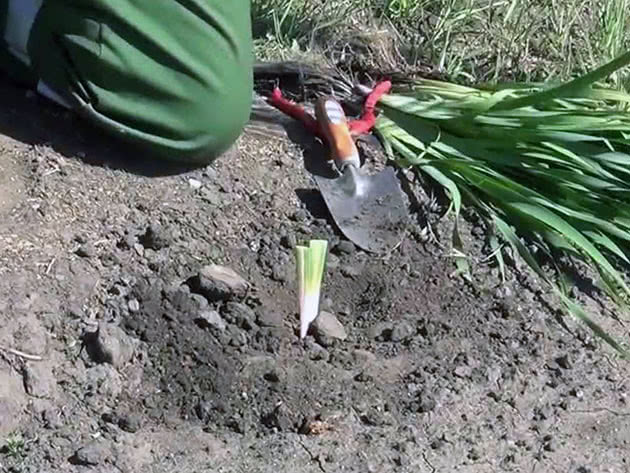
Planting of irises in autumn
In spring irises are planted in the same way as in autumn, or rather late in summer, namely after flowering. Usually this occurs from August to the end of September, although the earlier planting, planting out or transplanting of irises are, the higher chances that they will survive are. It is necessary to dig out the iris bush with forks, divide it into annual sections with a leaf blade, gently shorten the cord-like roots, cut out damaged or rotten places, disinfect them in a solution of potassium permanganate of a dark pink color for a couple of hours, then dry it in the sun for 4-5 hours. Planting of irises is carried out in already known way. The distance between dwarf irises is 6 inches, medium tall – 7.8 inches, tall – 20 inches.
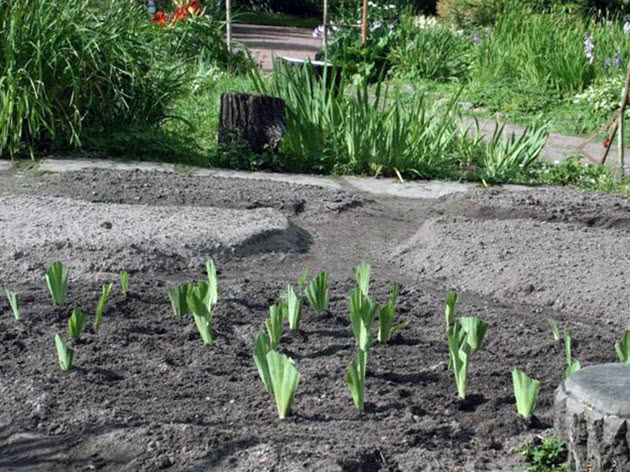
Care of irises
How to care for irises in the garden
The love of warmth and light is the main feature of irises. As for watering, it is important to strictly monitor the amount of moisture received by plants in the budding phase. At this time, watering should be regular and sufficient. In general, irises should be watered only when the soil around the roots becomes very dry.
As for fertilizing, in most cases it will be sufficient to fertilize the soil during the spring preparation of the site. But if you think that plants need dressing, then you should apply a solution of phosphate-potassium fertilizers, introduced at the root during growth, but it is strictly forbidden to fertilize irises during flowering.
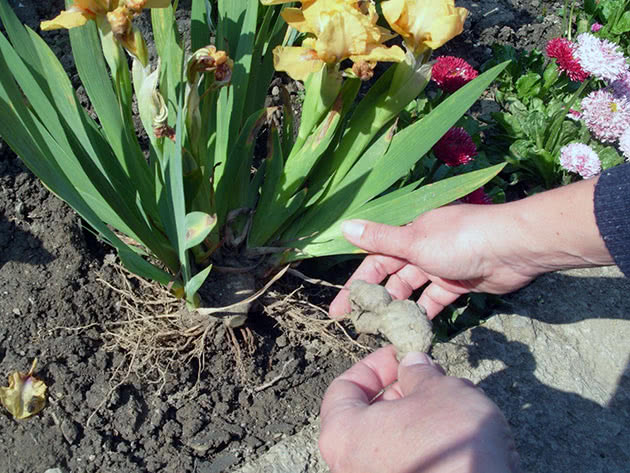
You will have to fight with weeds throughout the vegetation period. Weeding is done manually, since the horizontally developing root system of irises is very close to the surface, and you can accidentally damage it by working the chopper. Occasionally you still need to loosen the soil, but you need to do it very carefully, trying not to damage the roots. And again: do not be lazy to deadhead spent flowers, otherwise they can become a pest breeder.
Diseases and pests of irises
The more elegant and colorful the variety of iris is, the higher susceptibility to diseases and pests is. The main requirement for the health of your plants is the observance of all agricultural rules of the species. In addition, it is necessary to monitor the “well-being” of irises during the whole vegetation period in order to spot the problem in time and to be able to eliminate it. If the plant is affected by fusariosis or another kind of rot, the delay can lead to death: immediately remove and destroy the diseased plants and necessarily treat the remaining irises (under the roots and at the level of the roots) with a 2% solution of fungicide. Use this drug as a preventative treatment of rhizomes before planting, then the risk of possible diseases will decrease. As a preventive measure against the blight of all species, spray irises with a one-percent solution of the Bordeaux mixture.
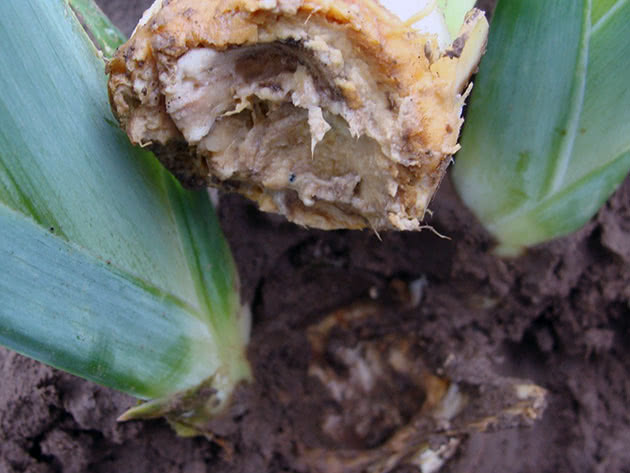
Among the pests irises are mostly attacked by cutworms, eating out the bases of the peduncles, as a result of which they turn yellow and die. To avoid this problem, at the beginning of the growing season, spray irises with a ten per cent solution of carbophos twice with a week interval. Irises are also attacked by gladiolus thrips that destroy photosynthesis in the leaves of plants, they turn brown and wither. If affected by thrips, the buds of irises turn ugly and discolored. The risk of infection with thrips is especially high in the dry summer. The problem can be solved with the help of malathion as in the case with cutworms, or by spraying plants with a filtered ten-day infusion of tobacco (14 oz of tobacco with 1.4 oz of grated laundry soap). Slugs are also the pest that attack irises. To get rid of them, place wet rags or burdock leaves between the bushes of irises, slugs will use them as shelter, and then collect them together with slugs and destroy them. There is another way to control slugs: in dry weather, in the early morning or in the evening scatter granular metaldehyde over the site at a rate of 1-1.4 oz per 12 yd².

Irises after flowering
If you are not going to plant your irises this year, it is best to cut off the peduncles after flowering. If the leaves begin to turn yellow, you can trim the yellowness by making the tip of the leaf semicircular – it will look very pretty, and your iris will still decorate the flower bed, and its rhizome will get saturated with nutrients necessary for growth and flowering next year. If autumn is warm, irises can start blooming again. When the leaves finally wither, cut them at a height of 4-6 inches and burn them to destroy possible pest eggs or pathogens.

Before the onset of cold weather, sprinkle the bare roots of irises with soil, cover the area with a 3-4 inch layer of sand or peat. If in your area strong or prolonged frosts are possible, cover the site with dry foliage or fir twigs. If winter is snowy, there is no need to cover irises.
Storage of irises
If you buy or dig out the rhizomes of bearded irises in autumn and want to store them until the spring, the best place to store them is a cold dry room. Place well-dried roots in a box and take them to a balcony or loggia. But first you need to wrap each root in paper, cloth or mix them with dry sawdust or dry peat in a box.

All other species of irises are moisture-loving, so the best way to preserve the root of iris until spring is to cut off long roots, disinfected it in a light solution of potassium permanganate, get it dried, and plant it in the pot. The root is immersed in the soil not deeply, slightly sprinkling the soil on top. In spring, the germinated root together with the soil clod is planted out in the ground.
